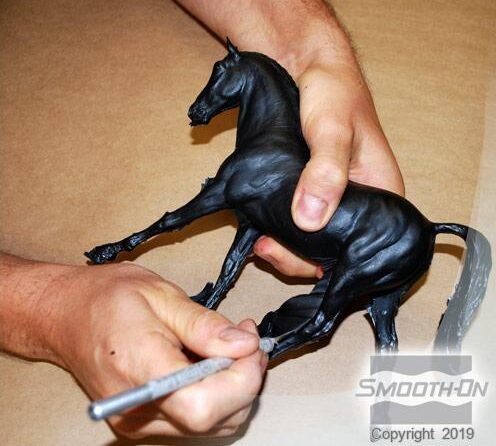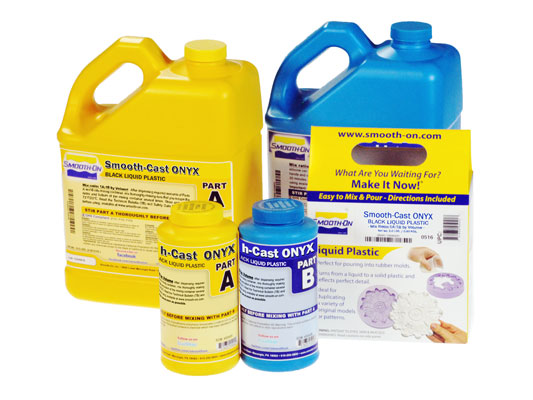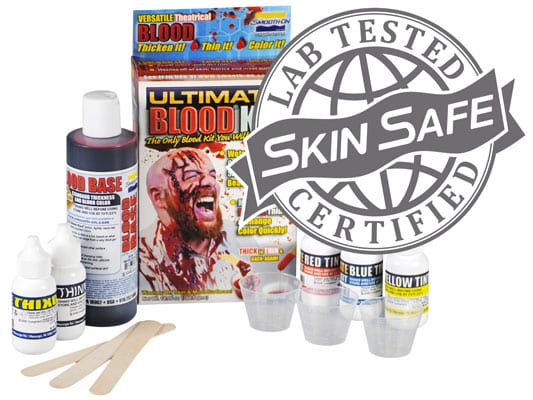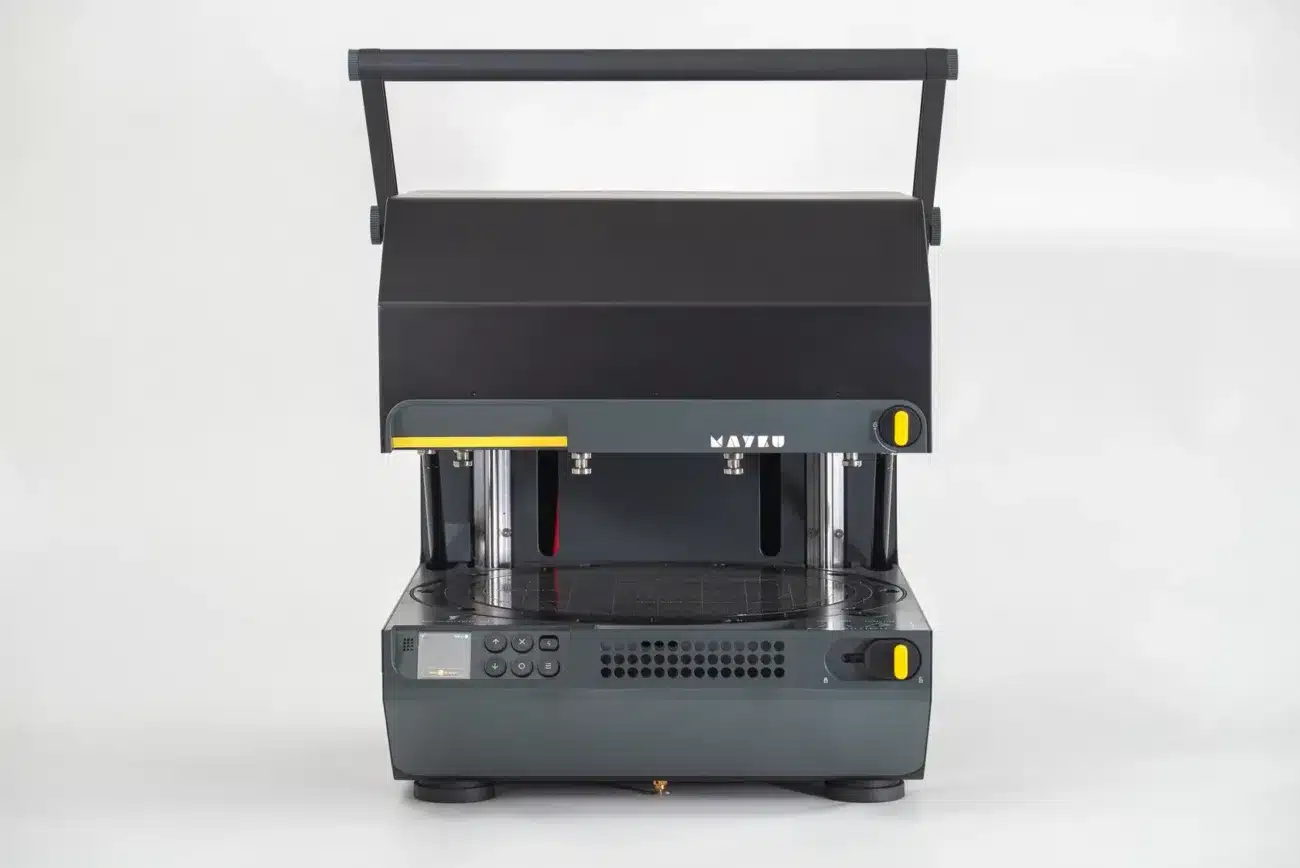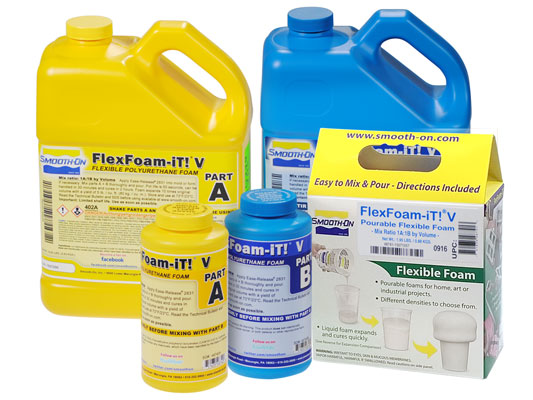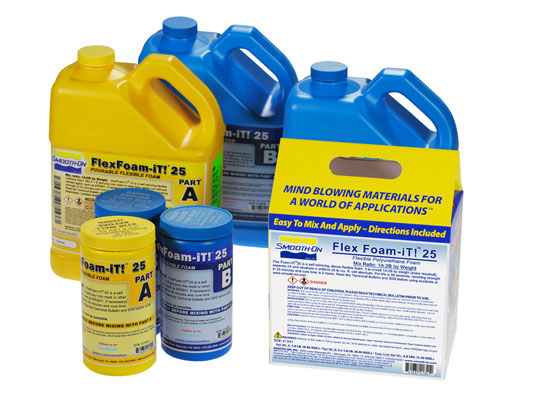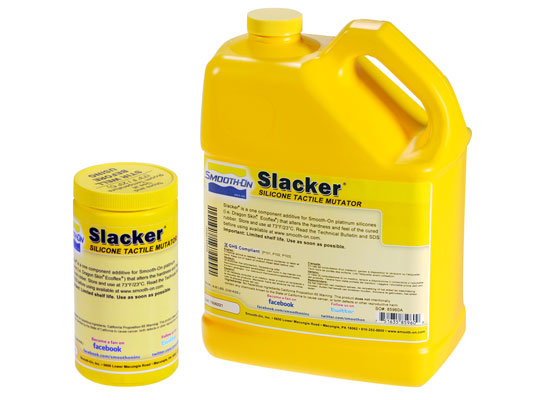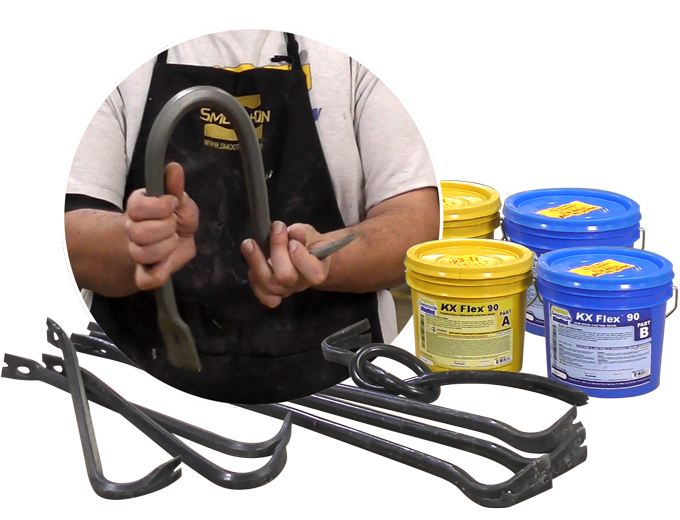Instructions
Preparation – All liquid urethanes are moisture sensitive and will absorb atmospheric moisture. Water based clays are not recommended. Mixing tools and containers should be clean and made of metal or plastic. Materials should be stored and used in a warm environment (73°F/23°C). This material has a limited shelf life and should be used as soon as possible. Mixing should be done in a well-ventilated area. Wear safety glasses, long sleeves and rubber gloves to minimize contamination risk. Because no two applications are quite the same, a small test application to determine suitability for your project is recommended if performance of this material is in question.
Applying A Release Agent – A release agent is necessary to facilitate demolding when applying into or over most surfaces. Use Mann’s Ease Release 200 which will release both urethanes and silicones. A liberal coat of release agent should be applied onto all surfaces that will contact the plastic. IMPORTANT: To ensure thorough coverage, apply release and brush with a soft brush over all surfaces. Follow with a light mist coating and let the release agent dry for 30 minutes.
IMPORTANT: Shelf life of product is reduced after opening. Remaining product should be used as soon as possible. Immediately replacing the lids on both containers after dispensing product will help prolong the shelf life of the unused product. XTEND-IT™ Dry Gas Blanket (available from Smooth-On) will significantly prolong the shelf life of unused liquid urethane products.
Mixing – Pre-mix Part-A and Part-B thoroughly before you begin. After pre-mixing both parts, dispense required amounts of Parts A and B into mixing container and mix thoroughly. Stir for at least 60 seconds, making sure that you scrape the sides and bottom of the mixing container several times.
Pouring – For best results, pour your mixture in a single spot at the lowest point of the containment field and let the mixture seek its level. This will help minimize air entrapment.
Curing – Important: Use this product with at least room size ventilation or in proximity to a forced outlet air vent and do not inhale/breath fumes. Fumes, which may be visible with a significant mass concentration, will quickly dissipate with adequate ventilation. Castings with significant mass may be hot to the touch and irritate skin immediately following cure. Let casting cool to room temperature before handling.
Demold time is directly proportional to mass and mold configuration. Larger castings will cure quicker than smaller or thin walled castings. Cure can be accelerated by adding SO-Cure™ cure accelerator (from Smooth-On) or applying mild heat (150°F/65°C).
If making rotational or hollow castings, backfilling with a rigid foam (Foam-iT!™ 5 or other) will provide lightweight reinforcement. Foam backfilling is recommended if castings will be subjected to temperatures above 85°F / 30°C.
Post Curing – Although not necessary, post curing will increase physical properties, material performance and heat resistance to 250°F/121°C. After curing at room temperature for 1 hour, expose material in the mold to 250°F/121°C for 4–6 hours. Let cool to room temperature before use.
Performance – Cured castings are hard and durable. They resist moisture, moderate heat, solvents, dilute acids and can be machined, primed and painted or bonded to other surfaces (any release agent must be removed). If machining castings, wear dust mask or other apparatus to prevent inhalation of residual particles. Castings can be displayed outdoors after priming and painting. Unpainted castings may be affected by UV light. Because no two applications are the same, a small test application to determine suitability is recommended if performance of this material is in question.

